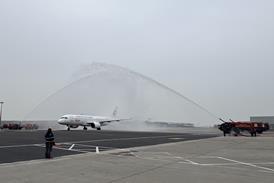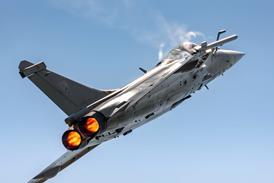Initial readings from the flight data recorder (FDR) from the Eurocopter AS365N Dauphin that crashed into the Irish Sea on 27 December killing all seven people on board indicate there was nothing technically wrong with the helicopter when it hit the water, according to a UK Air Accident Investigation Branch Special Bulletin.
The AAIB, which reports it has successfully downloaded the aircraft’s combined FDR/cockpit voice recorder and has recovered 90% of the wreckage, says the full inspector’s inquiry into the accident causes continues.
The AAIB says the helicopter (G-BLUN) had taken off from Blackpool, north-western England, to serve offshore gas platforms in Morecambe Bay. When the accident happened at 18:30 the aircraft was flying from the Millom West rig to the North Morecambe platform at 500ft (150m) above sea level on its third sector of the evening. The first officer was the pilot flying, and the visibility, at a reported 3-5km in rain, was marginal according to UK Civil Aviation Authority regulations for operations of this type at night, says the bulletin.
When approaching the North Morecambe platform the aircraft “slowly pitched nose down and commenced a slow roll to the right. At the same time the collective lever was raised, increasing power from the engines, and the indicated airspeed (IAS) and attitude began to increase. The crew became unhappy with the approach and decided to abort the attempt to land,” says the bulletin.
The AAIB says the co-pilot asked for assistance and the captain took control with right bank at 38º and the nose-down pitch simultaneously reaching 38º. The investigators report that in the next 2.5s the helicopter rolled level and the pitch reduced to 13º nose-down, but the airspeed was still increasing and there was a high rate of descent. “The last recorded parameters indicate a radio altitude of 30ft (6m), a 12º nose-down pitch, IAS at 126kt (233km/h) and a 20º bank angle to the right,” says the bulletin
Source: FlightGlobal.com























